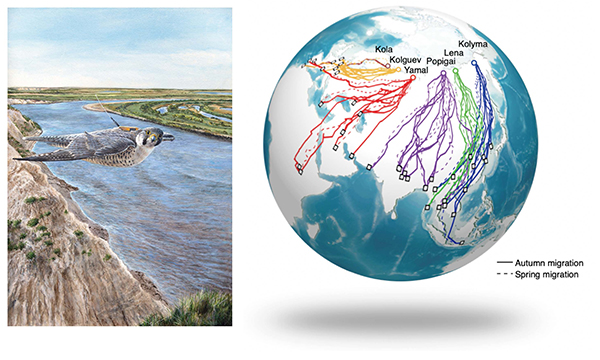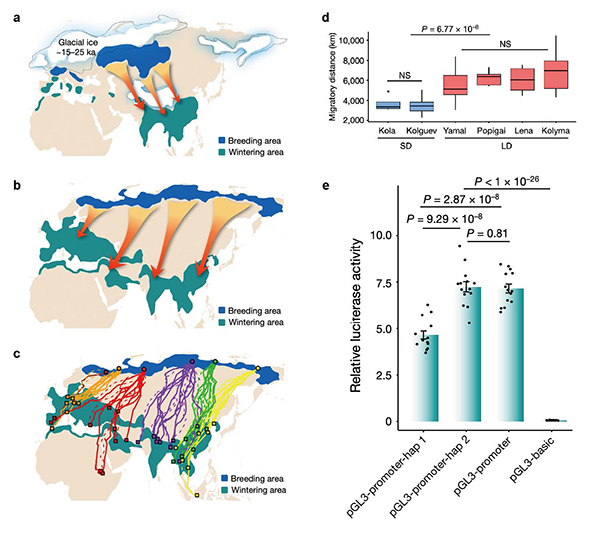

At the global scale, about 19% of extant bird species are migratory and there are eight major flyways used by migratory birds. However, up to date, little is known about the past formation, current maintenance, and future fate of these spectacular migration routes or the genetic determinants of migratory distance.
To address these issues, a research team led by Dr. ZHAN Xiangjiang from the Institute of Zoology of the Chinese Academy of Sciences integrated two state-of-art techniques, satellite telemetry tracking and whole genome sequencing, and established a continental-scale migration system of peregrine falcons (Falco peregrinus) in Eurasian Arctic.
Their results were published in Nature on March 11, 2021.
The researchers tracked 56 peregrine falcons from six Eurasian Arctic breeding populations and resequenced 35 genomes from four of these populations to study the migration of this species.
They found the breeding populations used five migration routes across Eurasia, which were probably formed by longitudinal and latitudinal shifts in breeding grounds during the transition from the Last Glacial Maximum to the Holocene epoch.
They quantified the migration strategies and found that migration distance is the most significant differentiation. Genomic analysis showed that peregrines migrated longer distance had a dominant genotype of the gene ADCY8, which may be associated with the development of long-term memory.
The researchers further predicted that future global warming may cause peregrines in western Eurasian Arctic to change migration strategies and face more risks of population decline. They concluded that using ecological interactions and evolutionary processes to study climate-driven changes in migration could help facilitate the conservation of migratory birds.
This work is the first study elucidating the main factors-past, present and future-shaping the Arctic migration routes and identifies the key genes which may play an important role in determining the migration route length. It highlights the significance of integration of satellite telemetry, next generation sequencing and functional genomics with classical analyses in untangling the formation and maintenance of migration route.
Moreover, the elucidation of spatio-temporal changes along migration routes lays a cornerstone for conserving migratory species throughout their migration cycles in conjunction with ecological interactions and evolutionary processes.

Fig. 1. The established migration system for peregrine falcons in Eurasian Arctic. (Image by IOZ)

Fig. 2. The spatio-temporal dynamics of Eurasian Arctic peregrine falcon migration routes and the genetics basis of long-distance migration. (Image by IOZ)